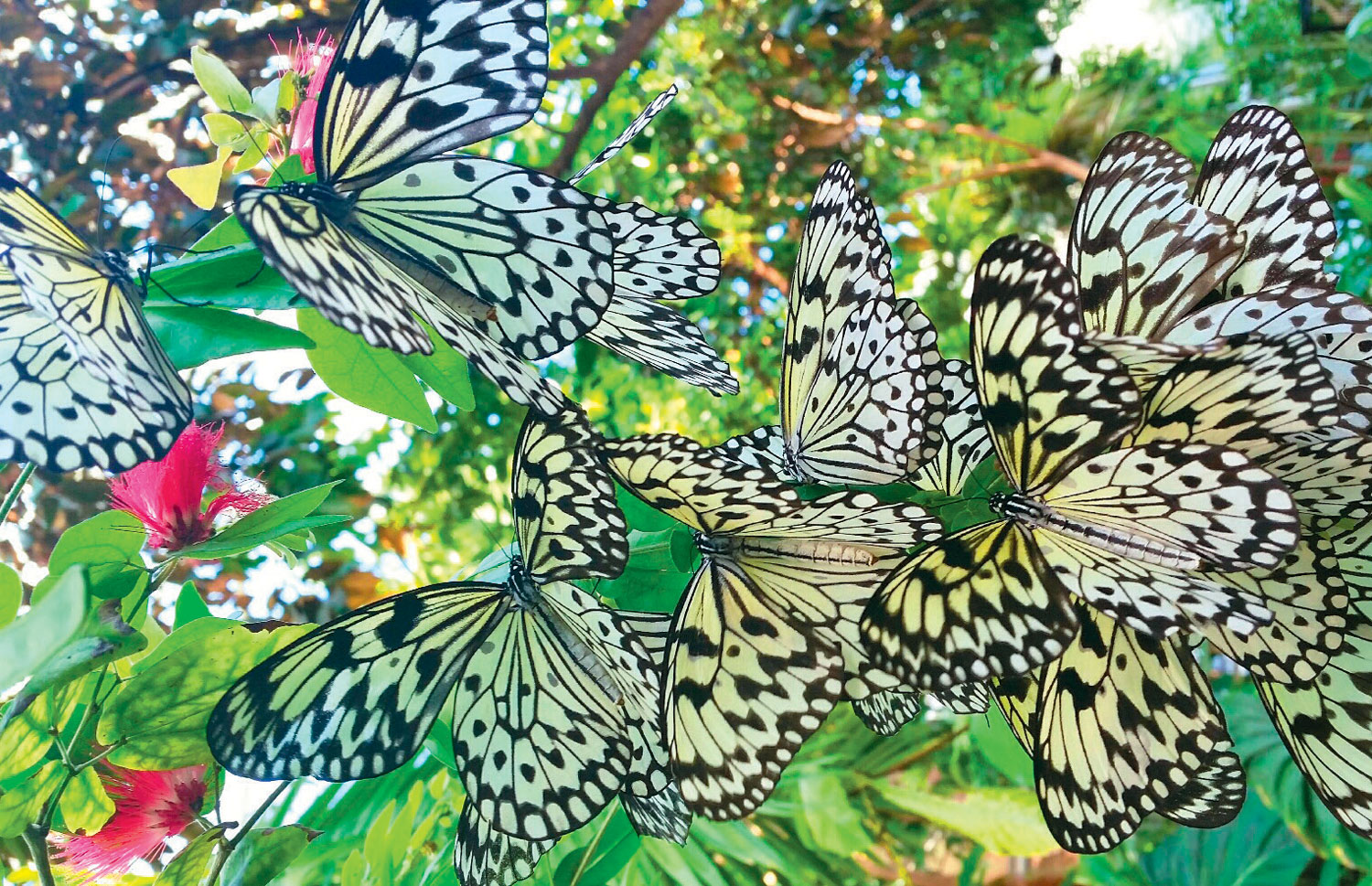The Cockrell Butterfly Center
Home to Houston’s Most Social of Butterflies
Part living exhibit, part tropical Zen garden, the Cockrell Butterfly Center at the Houston Museum of Natural Science is a bright and beautiful slice of paradise, complete with a 50-foot waterfall. Lush trees and bright blooms create a nectar-sweet backdrop for the center’s population of butterflies. Nancy Greig, PhD, is the center’s director, and along with her team—entomologist Lauren Williamson, horticulturist Soni Holladay and butterfly rearing coordinator Celeste Poorte—she runs an exhibit that attracts a quarter of the museum’s one million annual visitors.
As butterflies swoop and dance, the center’s unusual blend of exoticism and tranquility comes alive. The interactive nature of the exhibit means that butterfly selection is important. When it’s time to choose insects, the staff is looking, quite literally, for social butterflies. “If they aren’t that pretty, or if they are too small or hard to see, those butterflies won’t work,” explained Greig. A new in-house butterflyrearing program means that about 20% of the center’s insect inhabitants are homegrown Houstonians.
Bright-orange Julia Longwings are big, with assertive personalities, and eager to interact with people and butterflies alike; Poorte spends most of her time in the museum’s rooftop greenhouses raising Julias, a portion of which the museum sells to offset program costs. The blackand- iridescent blue Blue Morpho butterflies are fond of chasing the delicate white-and-black Rice Paper butterflies, which chase right back in a mid-air tumble of light and color.
While the colors of the Owl Butterfly may tend toward neutrals—a swirl of cream and yellow against a range of cool browns—their distinctive, clumsily bouncing aerials will surely catch your eye at dusk, when they prefer to fly. Though not butterflies, brightly colored Atlas Moths are the largest of their kind in the world; look for their Art Deco–like wing patterns not in the air but perched on plants and trees, as they are nocturnal fliers. Keep your camera handy for butterflies in repose, when you can best capture delicate wing details.
As Holladay explains, the low light and warm, humid conditions of the rainforest butterfly garden require shade-tolerant varieties like pentas, which bloom profusely in the 80° F., 80% humidity of the center, to keep the butterflies happy. To keep the plants happy, Holladay and the rest of the team have to make sure there is a steady supply of soil, which gets quickly depleted in the simulated rainforest conditions. “It’s dirty, sweaty work to move all of that soil, but as the soil decomposes, and nutrient levels go down, we have to manually add that back,” said Holladay, who spends much of her time rearing plants alongside Poorte in those rooftop greenhouses.
The efforts of Greig’s team are mirrored in the delicate balance of the center’s ecosystem. Her cultivated crop of biologist, horticulturist and entomologist work in concert to keep this little corner of HMNS teeming with life, day in and day out. Flutter by to see for yourself.
> The Cockrell Butterfly Center is open daily from 9am to 5pm with final entry at 4pm. Admission is $8 for adults, $7 for children, $4 for members
Christina Uticone is a freelance writer living in Houston. When she's not writing, you will find her on her yoga mat, or spending time with her husband, Josh, and their rescue dogs, Cady and Milo.






